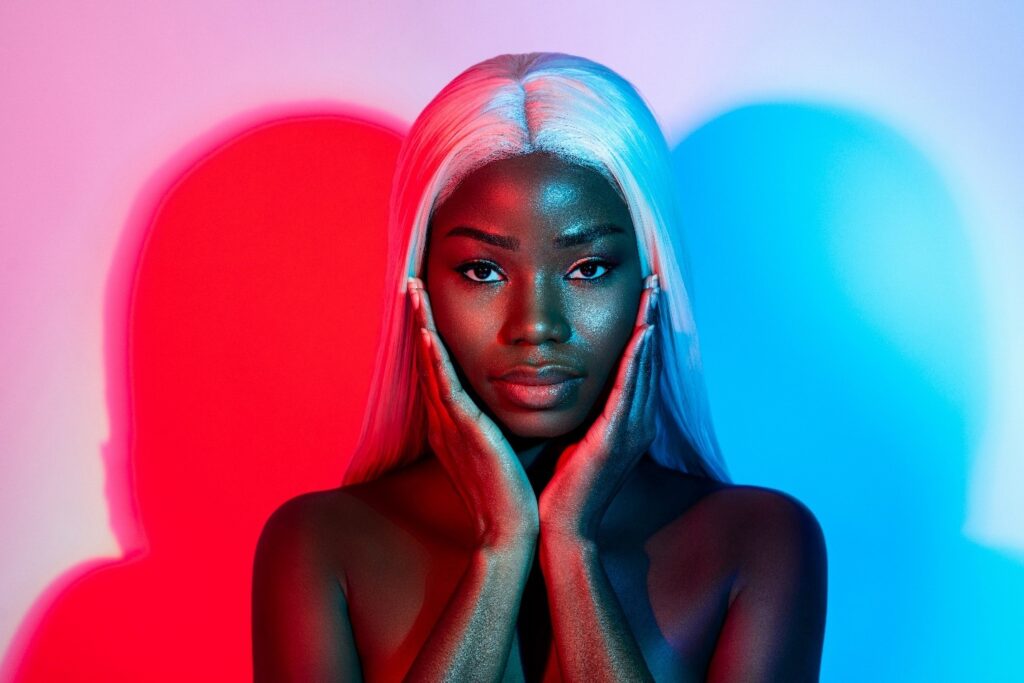
Gen Z and younger generations have proven to be some of the most expressive and fashionably open youngsters in society. With the imitations of several decades of yesteryear fashion to the “wild” hair colors that were once frowned upon and deemed unacceptable by many within society.
Various exciting colors can be seen being sported all over social media and in everyday life, from natural hair colors to vibrant shades of yellow, girly pink, royalty-feeling purple, and calming hues of blue. Wigs, braids, and hair dye have become a new norm for salon bills or DIY projects for young men and women exploring their personal styles.
However, despite all the fun, it’s been alleged by some mental health studies that there could be a direct link between hair colors and someone’s overall mental and emotional health. What is seen as a form of self-expression by today’s youth and adults alike is viewed from a diagnosable lens in the eyes of professionals.
The trend of dying one’s hair began in the early 1900s when Loreal produced the first official box of synthetic dye. The ideology behind changing one’s hair color is diverse in answer but cumulatively the same in reasoning, seeking a new look. Whether that look be bombshell movie star blonde, the coined “red hair phase,” or trying something new like lilac purple, the color of someone’s hair has become a universal trope labeled with several meanings.
Currently, the color of someone’s hair can be explained by self-expression or by what’s trending. Bold and vibrant hair tones were once frowned upon and seen as unprofessional, damaging to hair, and ugly. However, many in society warmly embrace the intimate decision to dye one’s hair or sport a new wig of an unnatural hair color. Braids and wigs have also been a staple in the beauty community for decades, both gaining their origins in the BC era; they’re seasoned vets in the hair game.
During the 70s, braids were worn with beads. Then, in the 90s, box braids gained significant notoriety in films like Poetic Justice and other talented people who wore them. There isn’t a specific timeframe for the trend of wearing braids with color. Still, it’s been a big hit in various communities all over. Still, it has significantly made waves within the black community. In contrast, despite color being embraced so lovingly and being a complementary look, black women are also much more heavily criticized than others when wearing colored weaves and dyed hair
Could what be viewed as harmless fun be a form of emotional expression without words? Fellow students shared why they enjoy dying their hair or adding color to their hairstyles.
“I decided to try something new despite being scared, and I like it,” said Jaia Wright, a third-year psychology major.
Lakya Barrett, a third-year psychology major, stated how she felt about the importance of coloring her hair. “I decided to try something new with my hair, because I like experimenting.”
Most people assume that much like the eyes are the window to someone’s soul, the color of their hair is a peak into their overall mood. The psychology behind color has been studied continuously: red is associated with boldness and flashy things, orange is an enticing but happy color, purple represents royalty, pink symbolizes girlhood, and so forth. Various studies conducted have found that some people can become addicted to changing the color of their hair in an attempt to fix their self-esteem.
Others believe there’s no harm in switching things up occasionally if they don’t become embroiled in the need to change themselves because of poor self-perception. In a positive sense, dying or altering the appearance of hair color improves self-esteem and outlook on life. In other words, by changing a staple part of themselves, people are essentially trying to reinvent themselves and enter a new phase of life.
There’s also the phenomenon that people dye their hair according to the time of year, each season.
Color is exciting, and to some, being able to dye or change the color of their hair is an empowering experience. Despite this, with there being the notion that people are possibly mentally unwell because of such changes, does this mean that the young adults and youth of today are unwell?
Could it also mean that the current celebs also need a little time on the therapy’s couch? Or is it taken too seriously and a misconstrued perception? Either way, as the years trot on, hair color, dye, skunk patches, and highlights continue to prevail, bringing forth a new hair trend each season.